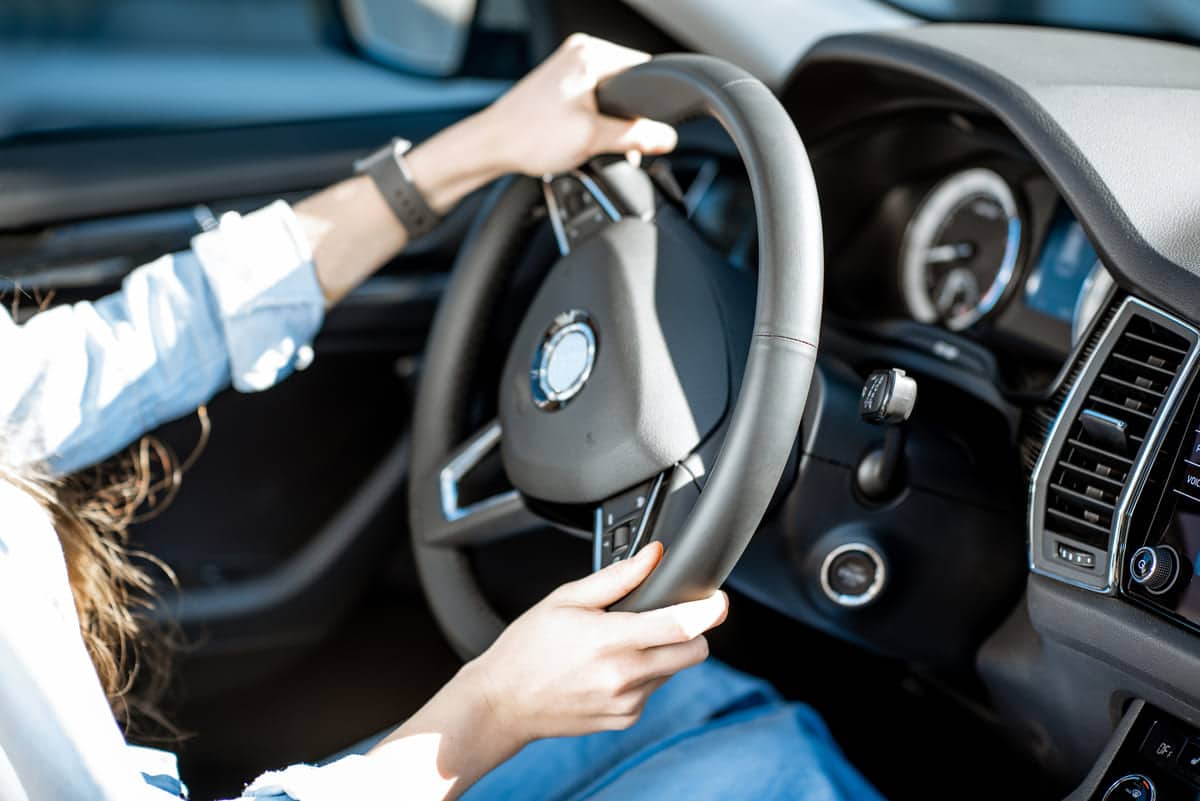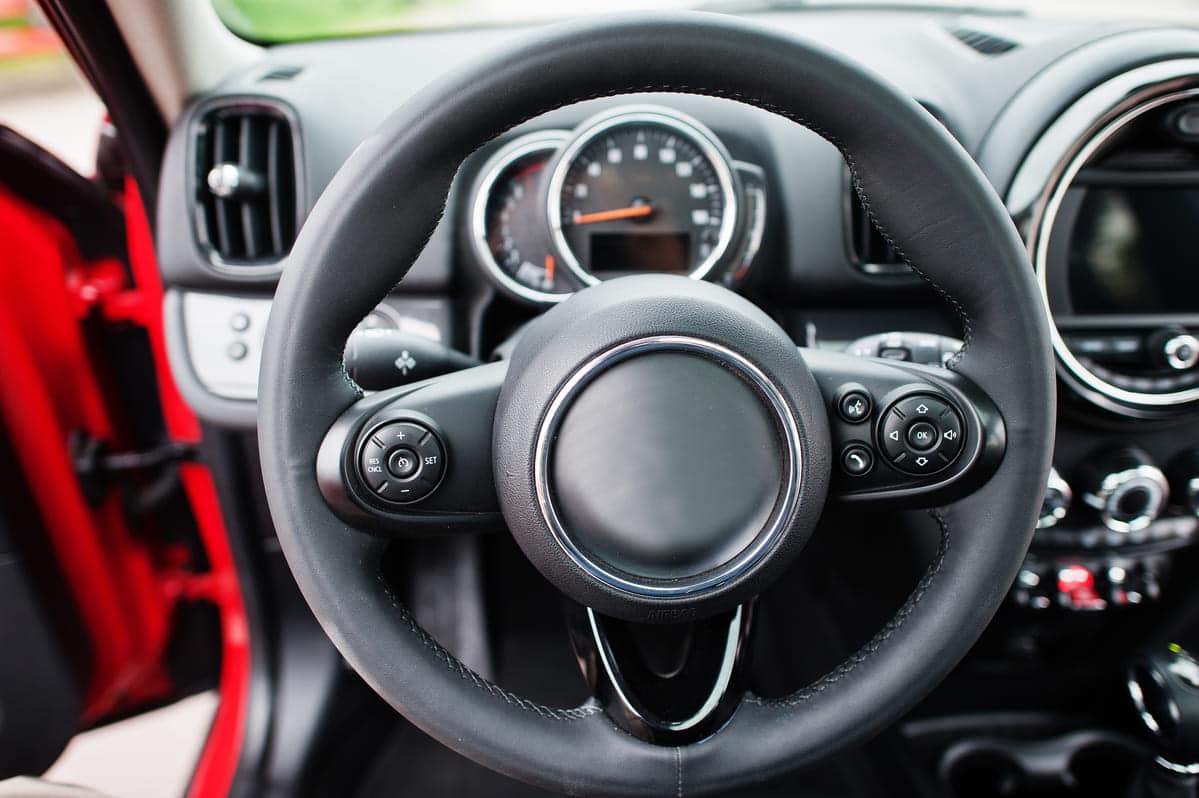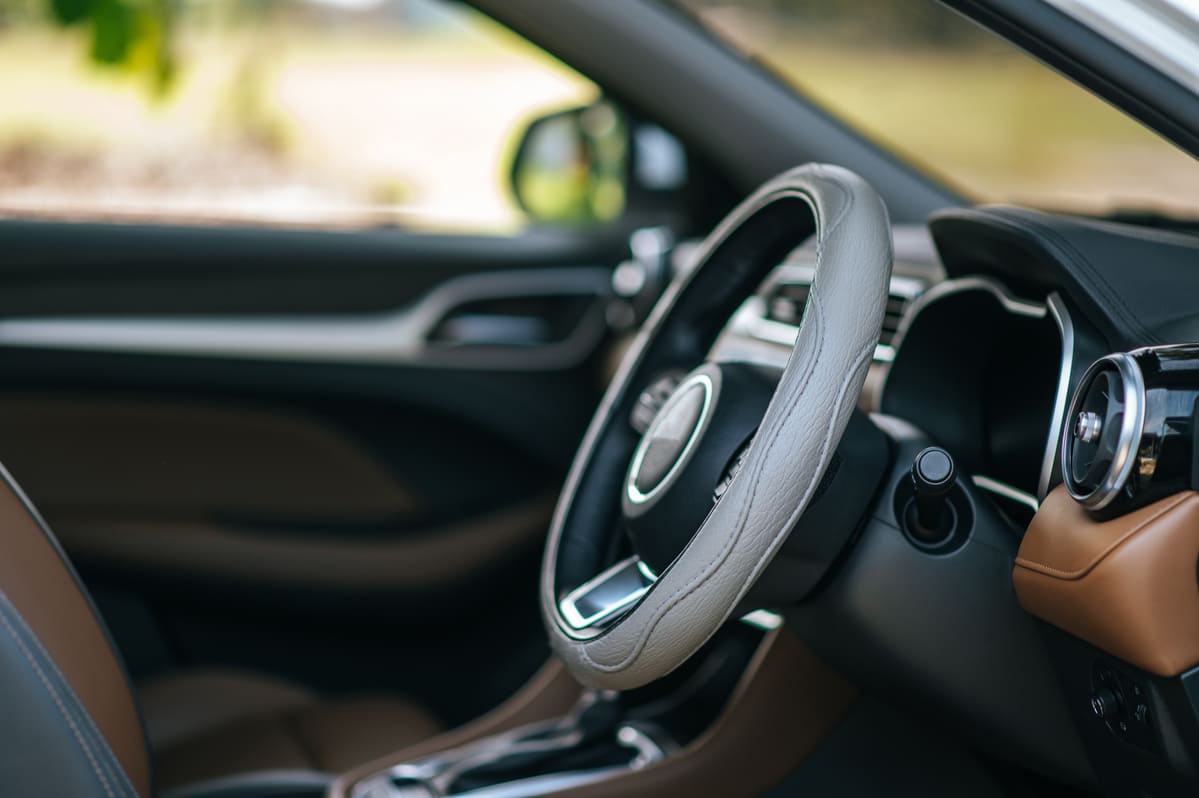The steering wheel is for navigation, it converts your inputs into directional changes. Over time it has evolved from a simple control to a multi-functional interface to make both the driver safer and more comfortable through design and technology.
What is the Steering Wheel in a Car?
The driving wheel, hand wheel and watercraft steering wheel all refer to the steering wheel in a . It is the primary control device to steer a vehicle.
The steering wheel is connected to the steering system. When you turn the wheel it moves the wheels left or right. That controls the direction of the car.
Modern steering wheels have features. These are buttons for audio, and sometimes even phone functions. Now most of the motor vehicle steerings have airbags for .
The design of the steering wheel is ergonomic. It is for comfort and to reduce driver fatigue. Materials like leather, plastic, or wood can be used for comfort and style.
Regular maintenance of the steering wheel and system is important. This means checking for wear and making sure all controls work. Proper care means safe and efficient driving.
References
- Steering wheel. Wikipedia. Retrieved from
- Steering Wheel Safety Tips. GEICO Living. Retrieved from
What’s the purpose of a Steering Wheel?
The main purpose of a steering wheel is to control the direction of a vehicle. It allows you to turn the front wheels left or right and guide the car.
The steering wheel is connected to the steering system which converts the driver’s input into the movement of the wheels. When you turn the wheel it activates the steering mechanism and makes it smooth and precise.
The steering wheel is part of the overall driving experience. It gives direct feedback from the road so the driver can control and stability. Modern steering wheels have integrated controls for added convenience like and cruise control buttons.
Besides directional control the steering wheel also contributes to driver safety by housing the in many vehicles. Proper use and maintenance of the steering wheel means safe and efficient driving.
References
- Steering Wheel. Britannica. Retrieved from

What are the parts of a Steering System?
The steering system allows you to control the direction of your vehicle. It has several components that work together to make it smooth and precise.
- Steering Wheel: The steering wheel is the interface of the driver. When you turn the wheel the driver initiates the steering.
- Steering Column: The steering column is the connection of the steering wheel to the rest of the steering mechanism. It transfers the rotational motion from the wheel to the steering gear or rack and pinion system.
- Rack and Pinion: The rack and pinion convert the rotational motion from the steering column into linear motion. This moves the tie rods and adjusts the wheel angles.
- Tie Rods: Tie rods connect the rack and pinion to the wheels. They make sure both wheels turn together and are aligned and stable.
- Steering Gear: The steering gear multiplies the driver’s input so it’s easier to turn the wheels. It adjusts the force needed for smooth and responsive steering.
Each part is important for vehicle control. The interaction of these parts makes it precise and stable steering and overall safe and comfortable driving.
References
- Types of Steering Wheel Controls Explained. CarParts.com. Retrieved from
How to use a Steering Wheel?
Choosing the right steering technique is important for safe and efficient driving. Different techniques apply to different situations so you can have optimal control and safety. Here are some of the basic techniques below:
Hand-to-Hand Steering
Hand-to-hand or push/pull steering is moving your left hand between the 7 and 8 o’clock position and your right hand between 4 and 5 o’clock. One hand pushes the wheel up and the other hand slides up and grabs the wheel and pulls it down. This way the hands won’t cross over the wheel and reduces the risk of injury from airbag deployment.
Hand-Over-Hand Steering
Hand-over-hand is best for low speed turns, limited visibility intersections or parking. Place your left hand between 8 and 9 o’clock and your right hand between 3 and 4 o’clock. One hand pushes the wheel up and the other hand crosses over and pulls the wheel further. This way you have more control in tight or slow moving situations.
One-Handed Steering
While two-handed steering is preferred, one-handed steering is sometimes necessary. Use it when operating vehicle controls like headlights, wipers or turn signals. Keep the other hand at 8-9 o’clock or 3-4 o’clock position so you can be ready for other maneuvers.
How to hold the steering wheel for optimal control and safety?
Here’s is how to hold the steering wheel for optimal control along with safety:
- Optimal Grip: Hold the steering wheel at 9 and 3 or 10 and 2 position. This grip gives you maximum control and reduces the risk of injury from airbag deployment.
- Turning: Slow down before turning the wheel. Use hand-over-hand for sharp turns and push-pull for gradual turns.
- Lane Changes: Check mirrors and blind spots. Use gentle and gradual movements to change lanes smoothly, with no abrupt steering.
- Parking: Use slow and deliberate steering when parking. Turn the wheel all the way in one direction to fit into tight spaces and have precise control and alignment.
References
- Steering Wheels. Autoliv. Retrieved from

What is Steering Wheel Adjustment?
Steering wheel adjustment allows drivers to adjust the steering wheel position for comfort and ergonomics. This adjustment helps improve driving posture and control.
- Types of Adjustment Mechanisms: There are different mechanisms to adjust the steering wheel position. These are tiltable, telescoping, swing-away steering wheels and adjustable steering columns.
- Tiltable Steering Wheels: Tiltable steering wheels can be moved up or down to find the perfect angle. This adjustment is for drivers of different heights to achieve a comfortable driving position.
- Telescoping Steering Wheels: Telescoping steering wheels can be moved closer or farther from the driver. This feature allows drivers to adjust the distance between themselves and the steering wheel for comfort and control.
- Swing-Away Steering Wheels: Swing-away steering wheels pivot to one side so you can easily get in or out of the vehicle. This is useful for drivers with mobility issues.
- Adjustable Steering Column: An adjustable steering column allows both tilting and telescoping. This way drivers can find the perfect steering wheel position for themselves.
Customization for Comfort and Ergonomics
Drivers should adjust the steering wheel so they have a clear view of the and road. The wheel should be at a comfortable distance so you can reach it without straining. Proper adjustment is for safer and more enjoyable driving.
References
- Steering Wheel Controls. HowStuffWorks. Retrieved from
What controls are on the steering wheel?
Today’s steering wheels have various to make driving more convenient and safer. These controls allow drivers to manage different functions without taking their hands off the wheel.
- Audio Controls: Steering wheels have buttons to adjust the volume, change radio stations or switch tracks. These controls let you manage audio settings while keeping your eyes on the road.
- Cruise Control: Cruise control buttons allow you to set, adjust, and deactivate cruise control. This feature makes long drives easier by maintaining constant speed without continuous accelerator input.
- Phone Integration: Bluetooth enabled steering wheels have phone controls to answer, end calls, and activate voice commands. These features are for hands-free communication and reduce distraction.
- Other Functions: Some steering wheels also have controls for navigation, climate control, and vehicle information display. These buttons give you quick access to important functions. Having controls on the steering wheel is for safety and convenience.
Drivers can adjust without taking their eyes off the road or hands off the wheel, reducing distraction and promoting better vehicle control. This is for comfort and more focused and safer driving.
References
- How the Steering System Works. How a Car Works. Retrieved from https://www.howacarworks.com/basics/how-the-steering-system-works


